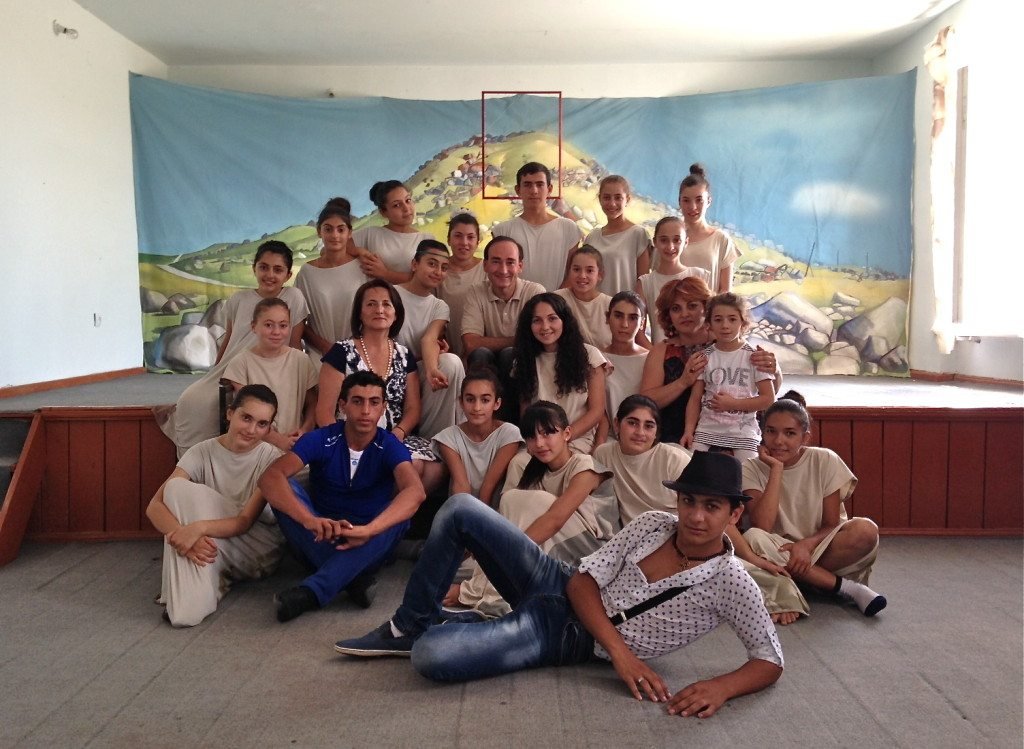A child brings two heavy buckets of water into the home of a strange old woman and discovers there a wall of cages with dogs trapped inside–and a small carpet on the floor that has been woven from dog fur. A nine-year-old girl refuses to go to bed, reducing her parents to tears of happiness. . .because her verbal defiance marks the first time she has spoken in years. And a young adult befriends a stream and then, when it dries up, has to journey far up a mountain to push aside the massive boulder that has rolled into the streambed and dammed the flow.

Behind these short stories are much longer ones. Behind these fables are powerful sagas of survival and poignant tales of transcending a life in which the cards are stacked against you. In some cases, it’s the universal dramas that accompany adolescence anywhere; in others, it’s the litany of problems that confront many teenagers today in rural Armenia–poverty, absentee fathers, the seeming impossibility of escaping a world of moldering Soviet industrial sarcophagi that blight an otherwise preternaturally beautiful landscape.
I saw these stories enacted by young adults last month in an experimental theater piece in Karakert, a town of about 4,000 people an hour northwest of Yerevan. The program is part of the Children of Armenia Fund (COAF) initiative in Karakert, an effort that is centered around a $700,000 school renovation, but also involves teacher training, elevating the community’s health care, economic and professional development, and–in this case–summer theater.
COAF is the non-profit brainchild of Armenian-American businessman Garo Armen, and has been working to elevate the lives of rural Armenian children for a decade now, with schools and programming in twelve villages today.
The rehearsal dazzled me. Before I left for Armenia, some of my friends who live in Yerevan told me I wouldn’t see any theater or opera on this visit, because so much of the city’s performing arts community is on vacation at the end of the summer. No worries: I had Karakert on my calendar. The ensemble featured twenty kids between the ages of 12 and 17, working with a Yerevan director who has been journeying almost daily to work with the young actors. Together they have written their monologues–or, in some cases, brief scenes–as well as chosen the music and choreographed the occasional dances.
I speak about fifty words of Armenian, most of which involve greetings and food, but the emotions in the performance were clear and they were raw. If I didn’t understand the details, I got the gist. I watched enrapt, impressed by the actors’ authenticity and moved by their emotional candor. This wasn’t merely about drama: It was about catharsis and growth.
After the performance, the students surprised me by wanting my opinion as a writer on their original narratives: What, in my judgment, worked – as well as what didn’t. I tried to be helpful and honest, but I kept coming back to this reality: A decade ago, their school was a husk with neither windows nor water, a casualty of the earthquake and sudden Soviet collapse. In the winter, it was heated with kerosene and burning manure. Now it’s a vibrant and inspiring world with a computer center, creativity lab, painting loft, and cheerful, comfortable classrooms. In some ways, these kids are the product of both a nation brought to its knees between 1988 and 1991, and of the tangible progress that is occurring daily. They know where they are coming from–and where they want to be going.
We in the Diaspora are right to worry about oligarchic dishonesty and political corruption in the small swatch of our once massive empire that today is our nation. It’s natural to wonder how we can pull our fellow Armenians from a fiscal quicksand created by closed borders and an unfairly landlocked geography.
But if I learned anything on my most recent visit to Armenia, it is this: Our youth there are not merely resilient. They are not merely talented. They make the most of the opportunities we in the Diaspora give them. They are ready and willing to climb the mountain to push aside even the most damming–and damning–boulders. With a little help from all of us, they are capable of building an Armenia that will make the next generation very, very proud.


Be the first to comment